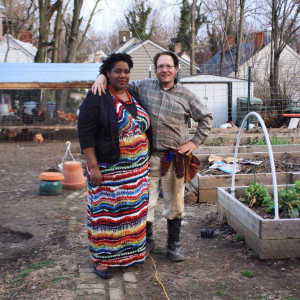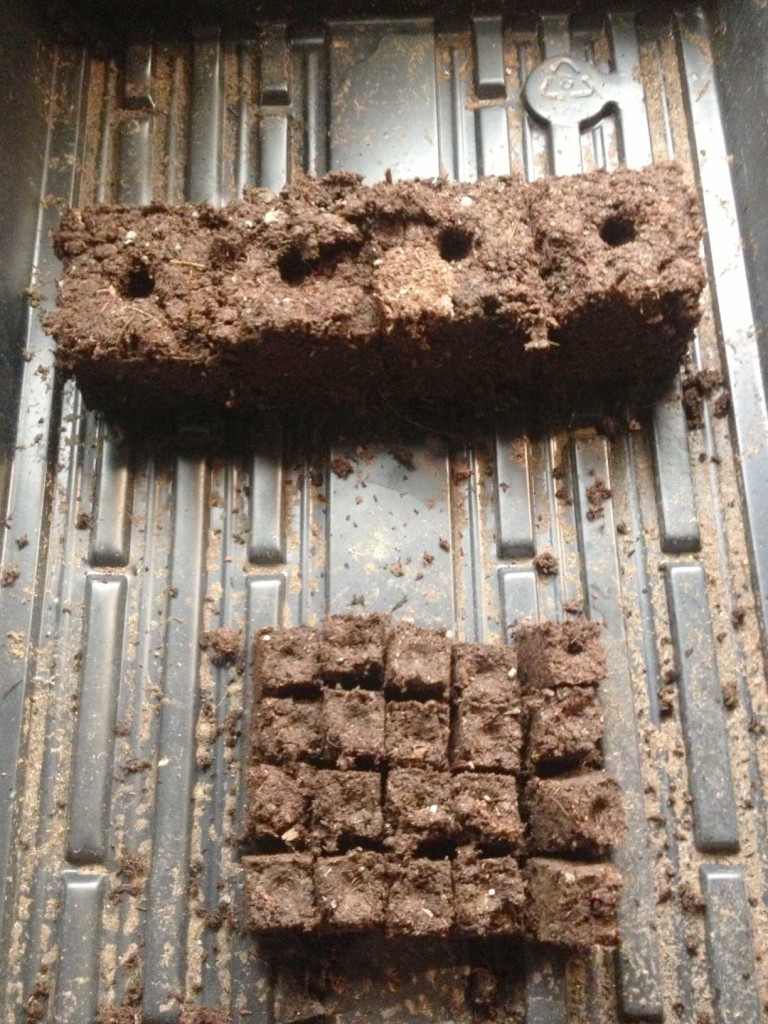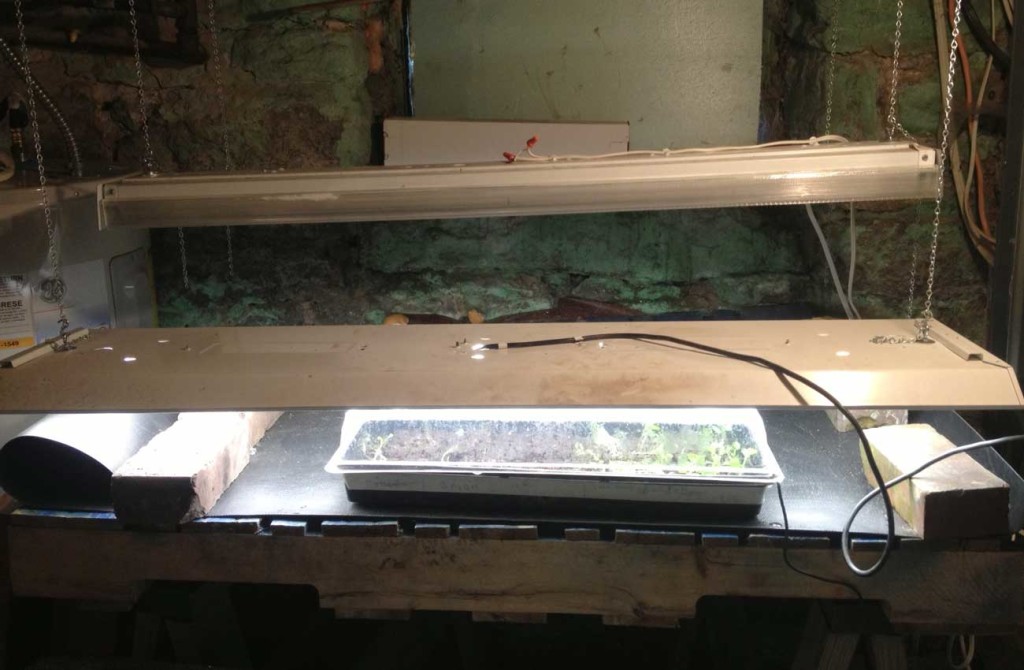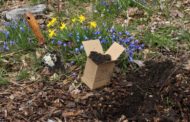AMOS FARM: Seed Starting
by Christian Torp
“Life always bursts the boundaries of formulas. Defeat may prove to have been the only path to resurrection, despite its ugliness. I take it for granted that to create a tree I condemn a seed to rot. If the first act of resistance comes too late it is doomed to defeat. But it is, nevertheless, the awakening of resistance. Life may grow from it as from a seed.”
This month I begin with a disclaimer and a touch of reality. I’ve gardened my whole life and am only now really getting into starting my plants from seed. Nurturing your plants throughout their entire life cycle adds a whole new dimension of complexity, scheduling, cost and stress to your gardening experience. There is no shame in growing nothing but transplants. Moreover, starting from seed requires the proper setup and the proper setup requires time, space and money — as if gardening wasn’t expensive enough!
Despite these setbacks there are clear and significant advantages to starting your crops from seed. Among these are: Crop selection, Genetic diversity and Seed saving.
Crop selection and Genetic diversity: Not only is the variety you’ll find available as transplants extremely limited, a large number are hybrids, the offspring of two different specific parent plants. Although hybrids are predictable (50% x 50%=100%), the offspring of hybrids is a crap shoot (?% x ?% = ?), so your seeds cannot be saved. If you ever hear that a plant “breeds true” this is what they’re talking about (always a trait of heirloom seeds.)
In this age of uniformity plant suppliers are focused on what they can sell the most of and that’ll do well enough in the most places. “The best is the enemy of the good,” said Volatire. Although a certain time honored strain of a vegetable might have been bred for centuries to perform best in your specific locale, any big box store would rather have good enough for all their outlets and not have to deal with any specific a market.
Seed saving: As I’ve said you can’t save hybrid seeds and industrial ag giants like Monsanto love the opportunity to throw their weight around and scare the American populace into submission. This isn’t a problem with heirloom seeds so you can keep what does well for you. I’ll discuss seed saving in a future installment of the Amos Farm.
Finally, costs saving isn’t a reason unless you’re growing at a production scale. A packet of seeds costs about as much as the typical tray of 3-12 seedlings you’ll find, and unless you’re trying to grow all of the seeds that come in a packet most of em’ll end up in the compost… so you won’t be saving a thing.
Now how to do it: Mix seeds with a growing medium, light and moisture, at the proper temperature.
Growing medium: Use either a seed starting mix from your local supplier or make your own. I like to make soil blocks using a hand held 20 soil blocker and 4 soil blocker I purchased from Johnny’s Selected Seeds using the blocking mix recipes from Eliot Coleman’s The New Organic Grower (included with block makers).
If you’d rather not invest in soil blocker’s, use small peat pots, and when you’re seedlings are ready, slit the sides of the pots and plant the whole thing.
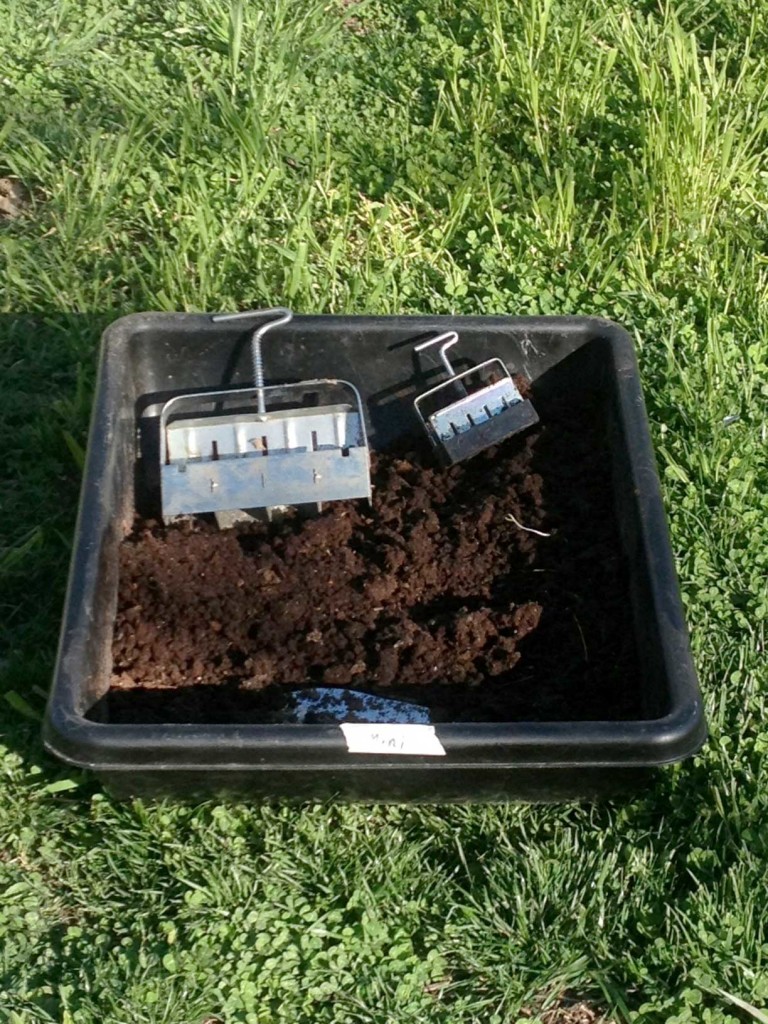
Blocking setup: A cement mixing pan used for mixing seed starting medium and making seed blocks and two seed block makers.
Light: The more, the better. I use fluorescent light fixtures (new or used) using standard florescent bulbs, the higher the light output, the cheaper, the better. Don’t bother with special “grow lights”, regular old bulbs’ll work fine, but here’s the key, the light should be inches, literally 2”, from the plants.
Moisture: Moist but not dripping wet. A spray bottle works best, especially with soil blocks to prevent them from washing away.
Temperature: It depends on the plant, but if the room you’ll be starting seeds in isn’t unreasonably warm (i.e. 80°) it won’t work well, or at all.
I’ve found it advantageous to purchase a heat mat and thermostat. Like I said, starting from seed isn’t about saving money and temperature is paramount. The aggravation and disappointment isn’t worth what I might have saved by forgoing my heat mat.
Finally, know what needs to be started indoors, and what doesn’t. Research your plants and know that some things must be started inside or transplanted, and others won’t or can’t be.
Now have fun and make sure to keep up on your watering and moving your plants to bigger soil blocks before it’s too late!
Christian L. Torp is an attorney, missionary, activist, urban-farmer and advocate for social change who lives at Justice House (Facebook: Justice House) with his wife, Tanya in Lexington, KY. If you have any questions or comments for Christian, or there’s something you’d like to know more about, please reach out to him at theamosfarm@gmail.com.

